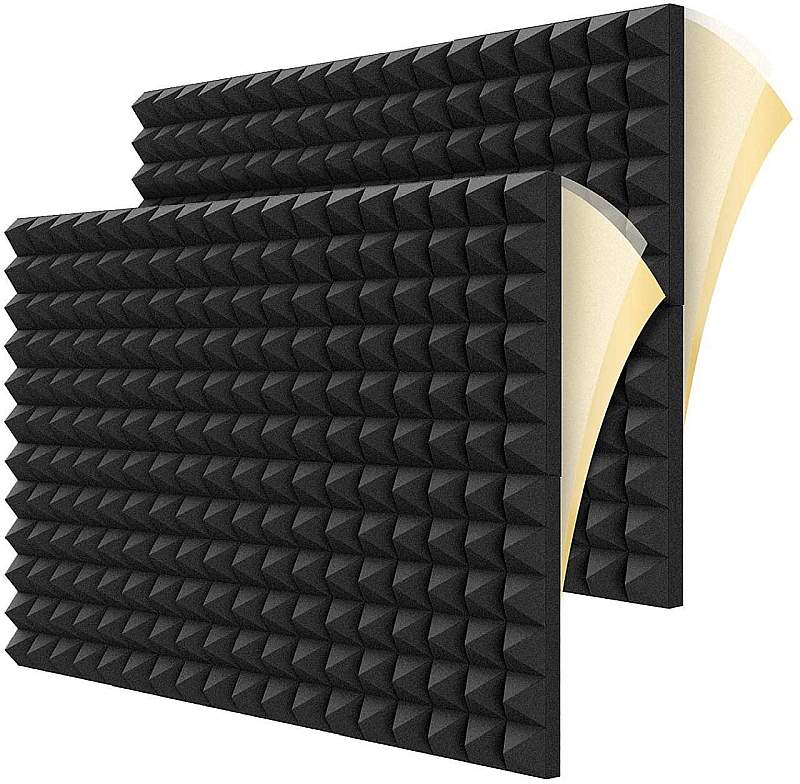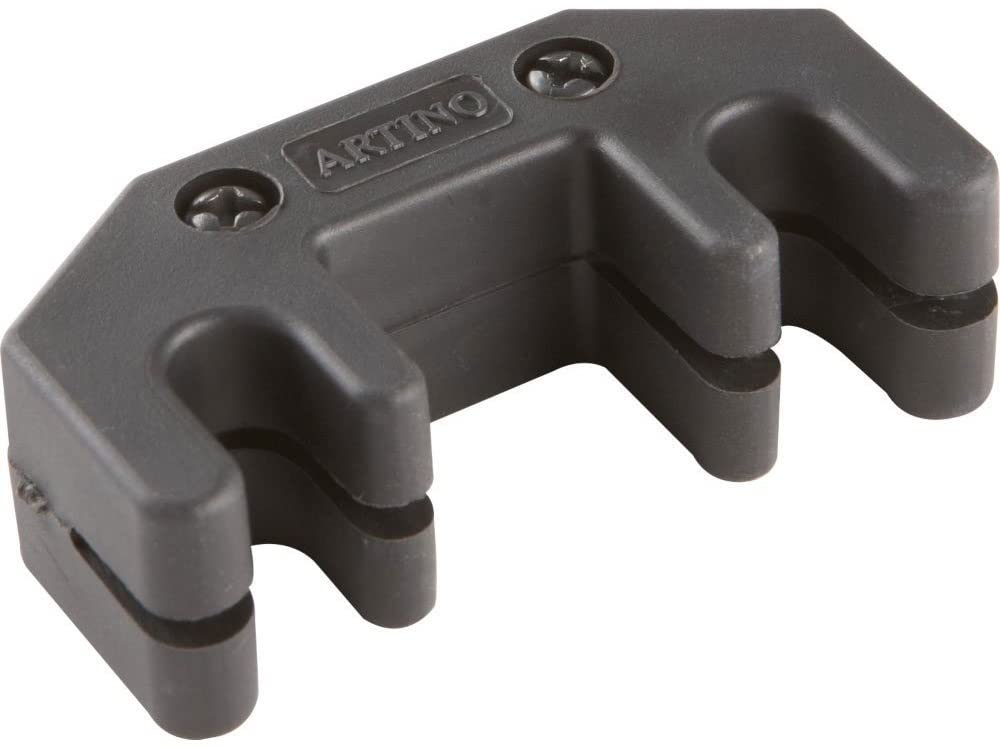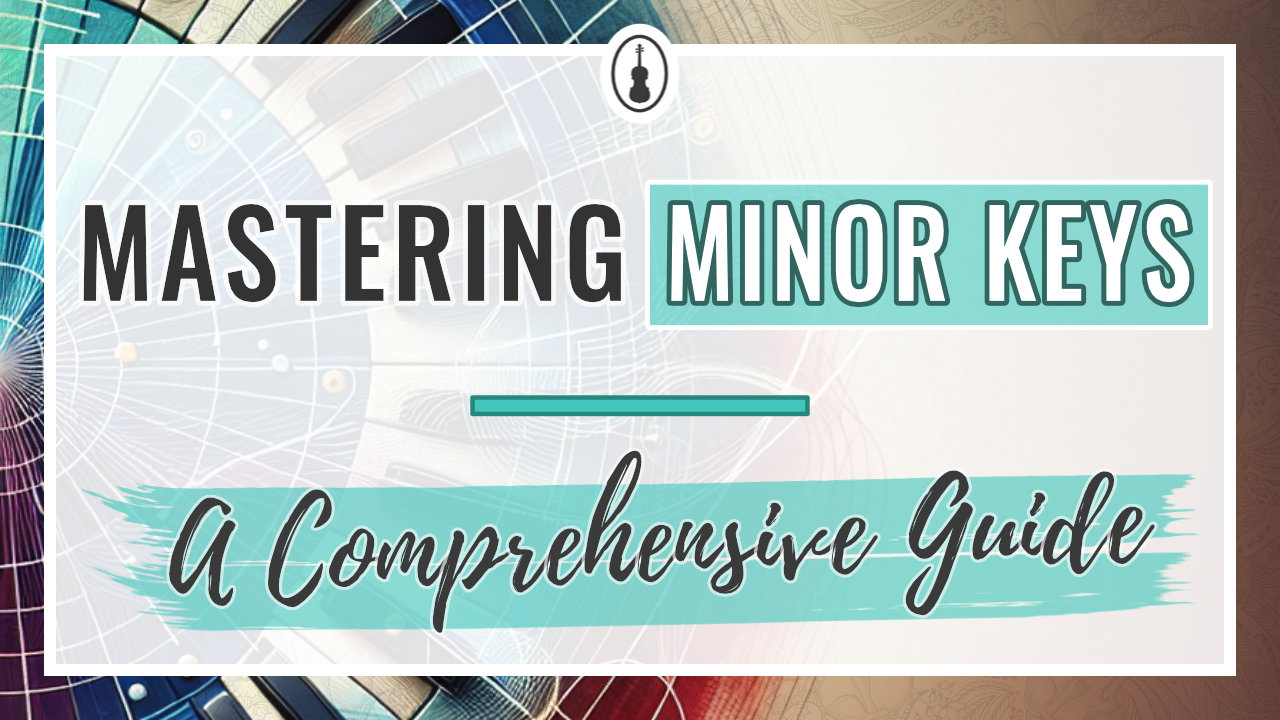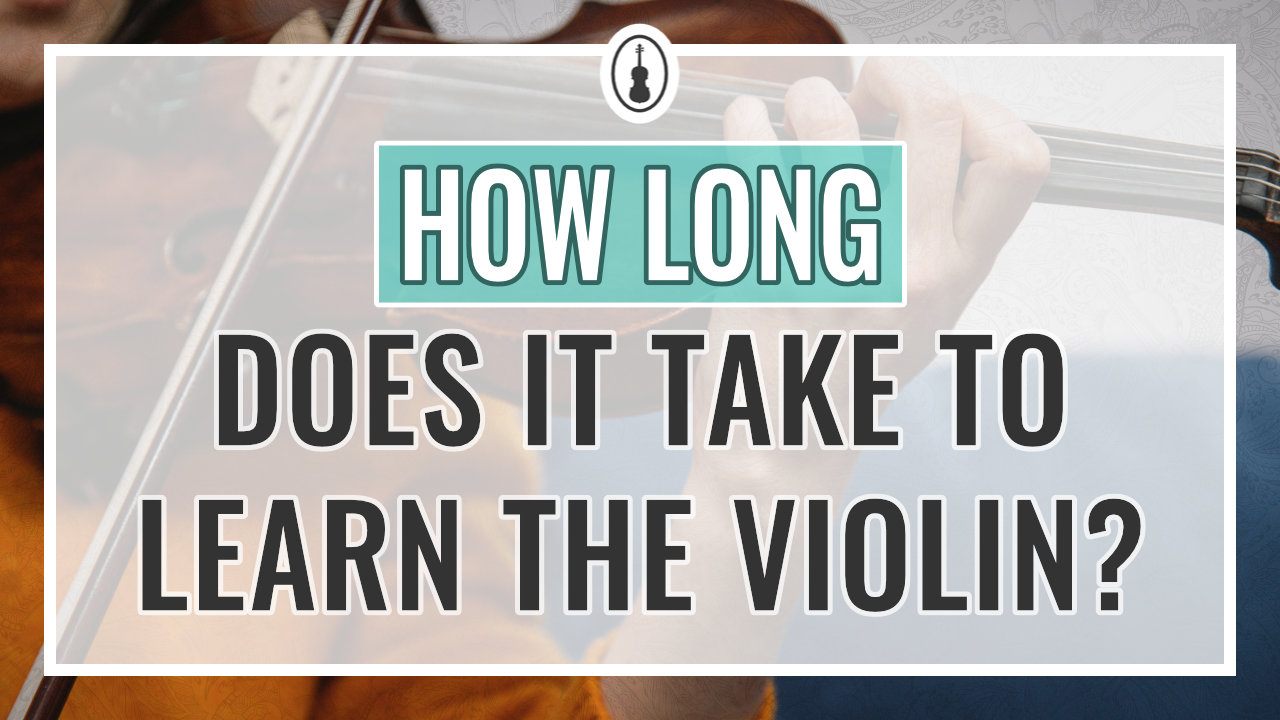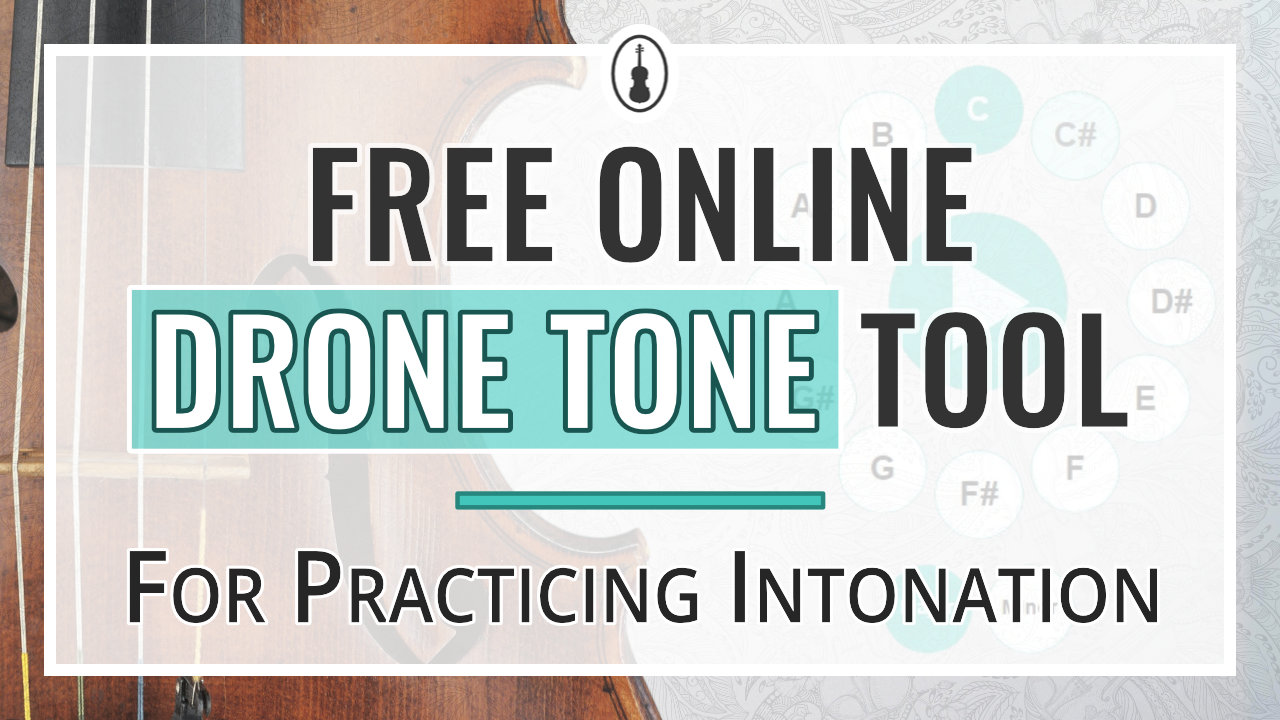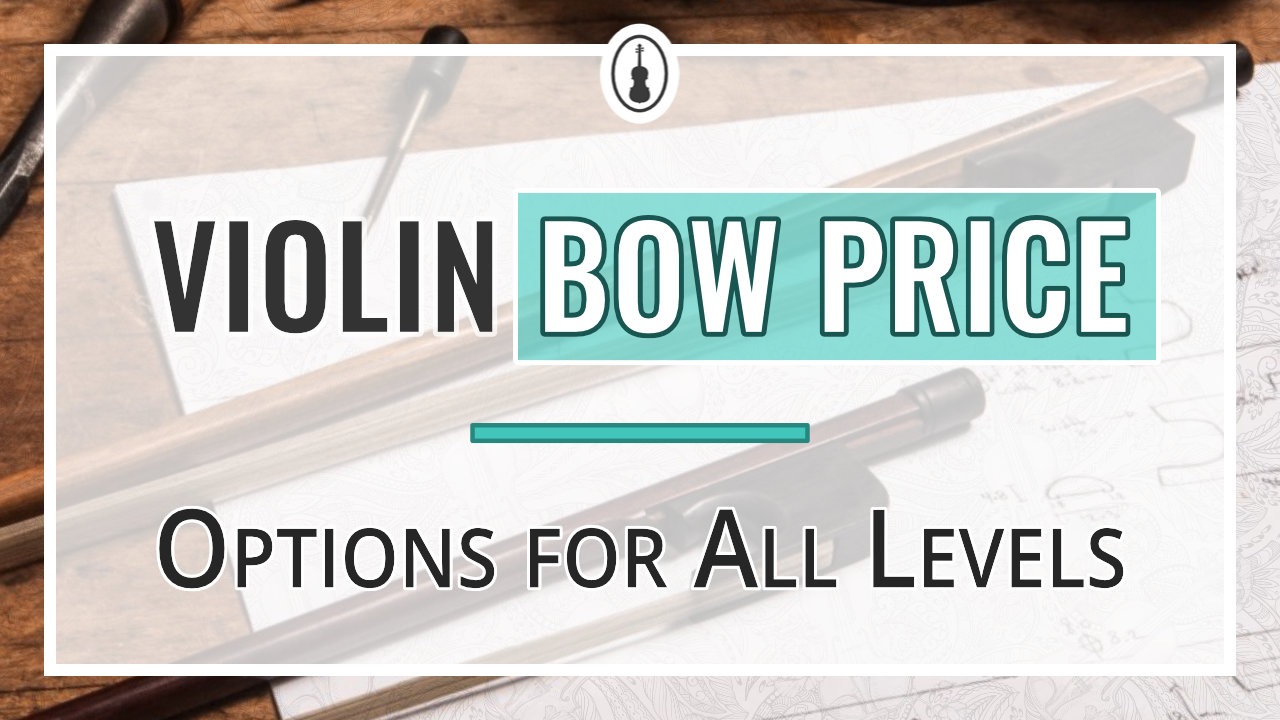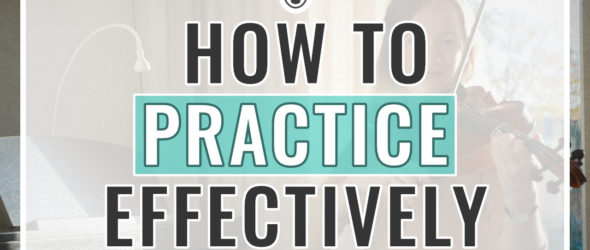
Learn how practicing the violin can be done effectively.
For players of any instrument, effective practice has many components. From the structure of your practice through techniques, identifying problems, to what state of mind you’re in. We all know that playing the violin is a complex and difficult pursuit. Which is also what makes it worthwhile. You’d think the more time you dedicate to it the more you will get out of it, and that is true to some extent. However, the quality of your violin practice is not simply the number of hours, but how deliberate you can make it. Identify where you need to improve and find systematic ways of changing things. I hope that my article will help you with it.
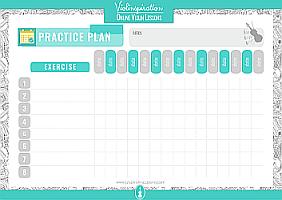
Fillable Practice Plan [PDF]
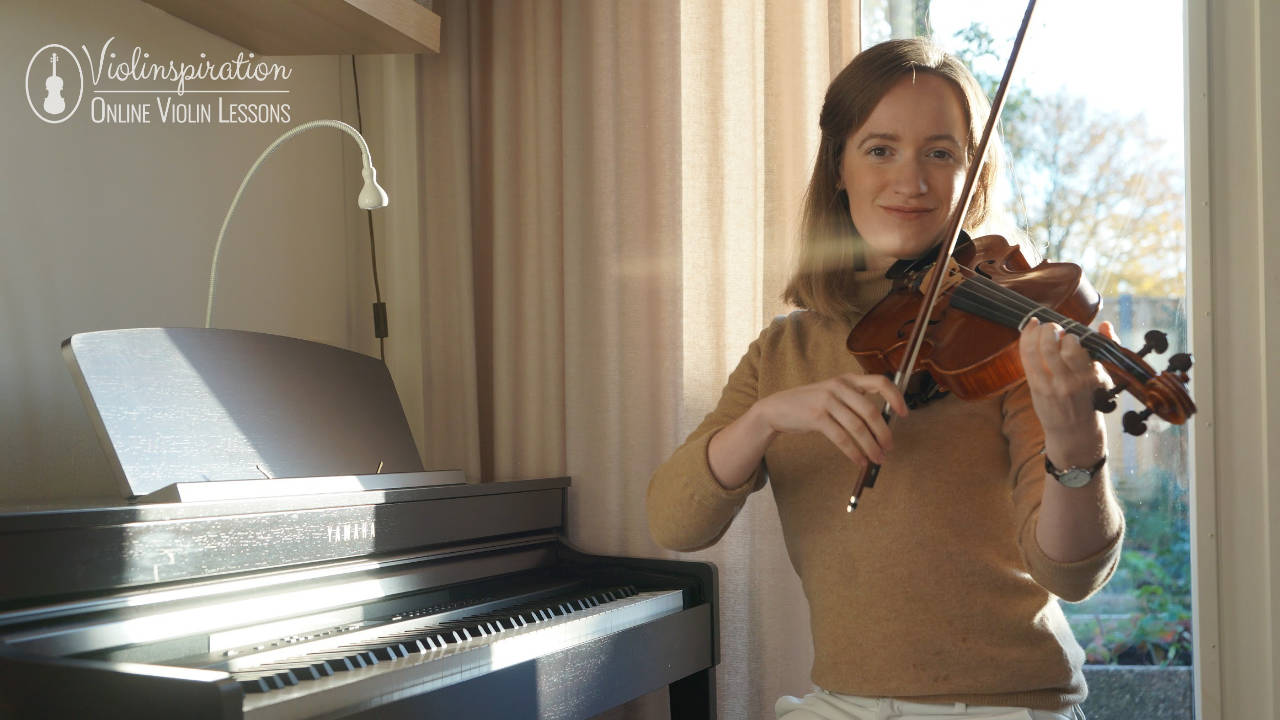
How to Practice Violin?
The single most important thing is to practice violin deliberately. Pay attention to where you need improvement and find how to adjust what you’re doing. Your violin practice should be structured with attention to learning step-by-step. The best would be to practice every day, even for a short amount of time.
Also, you need to develop good habits which take time, so be patient with yourself. Below you will find a list of good habits that people have found useful.
To make sure you get off to a good start, nothing will replace a good teacher. Be it in person or online, their technical know-how is exactly what a student aspiring to make good progress needs. Having said that, there is a lot you can learn on your own by using my free Video Lessons library and the resources you can find in the other articles on my blog.
12 Good Practice Habits to Get Better at Playing Violin
I’ve gathered for you 12 good practice habits and I talk about the best 5 of them in the video below:
1. Practice Every Day
To get the biggest benefit, regularity is more important than the length of time. It builds up your skills gradually, allowing time for things to settle before adding new things.
How to practice the violin consistently? I answer this question in the video below:
2. Structure Your Session
This way you will have a balanced violin practice that includes all the things you need.
3. Check That Your Posture and Bow Hold Are Correct
Do this before you start to play and again during the practice session. Use a music stand, so you can maintain a correct posture. Looking in a mirror from time to time can also help.
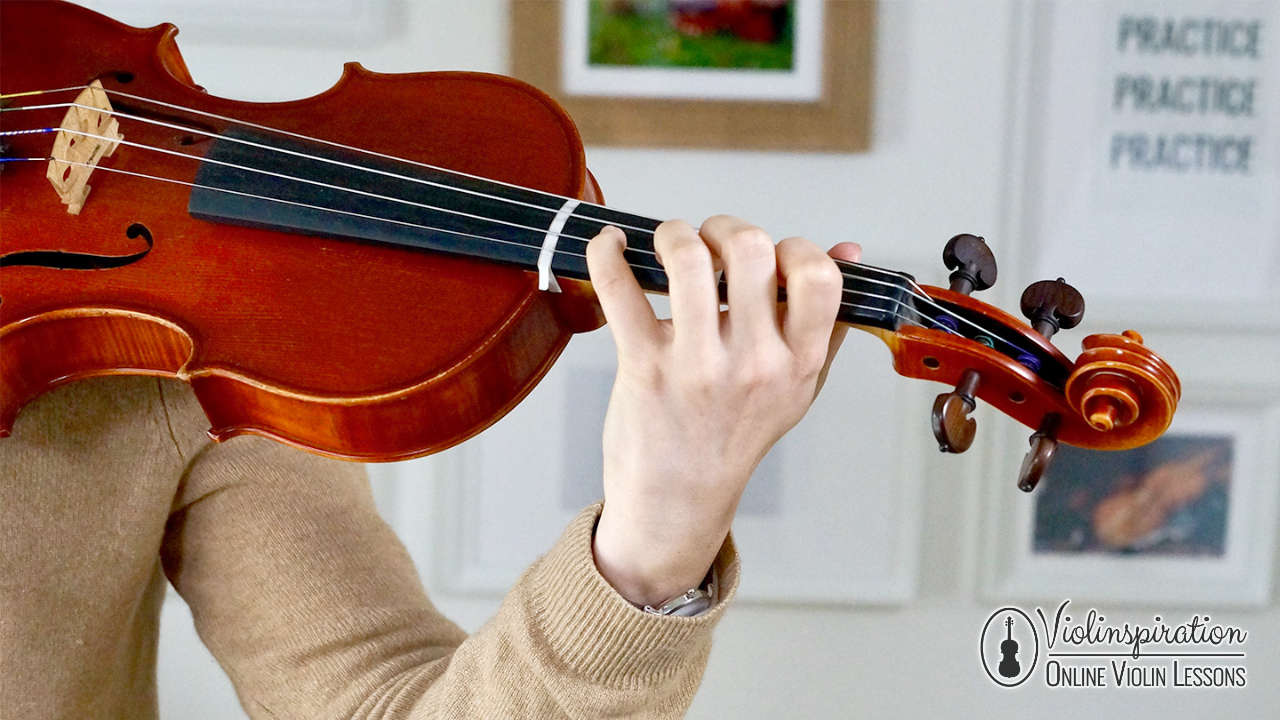
4. Be Deliberate
Have a clear intention of what you will be focusing on, for example, intonation or string crossings. Find the specific problems you are having and solve them.
5. Play Slowly and Quietly and Keep a Steady Tempo
Give your brain and body time to notice things and absorb new movements. Extremely slow practice is vital at all stages of your learning. Remember not to speed up at easier parts.
6. Break Things Down to Smaller Chunks
This way you can get clarity on them. Make it simpler and build up the complexity step by step.
7. Pick Good Fingerings and Bowings, and Stick to Them
Once you have mastered one way of playing, you can change the fingerings, maybe also find an easier way to play a certain part, and re-learn the piece that way. This will increase your versatility and knowledge of the piece.
8. Repeat the Correct Version Many More Times than You Did the Wrong Version
When you are not getting something and you keep trying, don’t stop the moment you got it right. Because if you do, you will have repeated the wrong thing many times and the right thing only once.
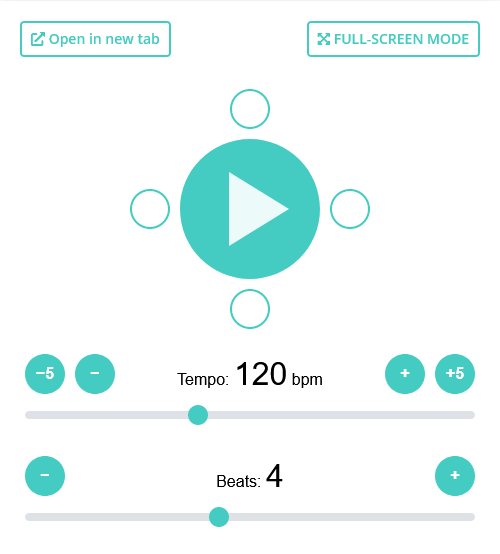
10. Play With Ease
Sometimes focusing too much on the technique we end up trying too hard and create tension. Feel into your body to locate any grasping, and see if you can let go of these and play the same passage with more ease.
11. Be Musical and Listen to the Sound You’re Making
Violin playing is about making music. It is never too early to play musically, rather than simply focusing on technique. Pay attention to what the character of the piece is, what emotions it is conveying, what style of music it is. What do you want it to sound like? Try playing it in different ways, and explore what could express particular emotions. Play it in ways you would never perform it, just to see what effect it has.
Recording yourself and listening to this can also give you ideas about where and what to change.
12. Have Fun!
This is perhaps the most important thing. Enjoy yourself!
Planning the Practice Session
These three aspects will help you organize yourself.
Planning the Space
Create a clean and organized environment to play in. Give yourself the space to be undisturbed and unrushed as much as possible. It’s hard to get into something fully when there are other matters pressing on your mind. Have few other things around than your music stand, sheet music, metronome, and violin.
Planning the Time
Find the best times for you to have your session or sessions. Figure out at what time of the day you can practice and what is the optimal length of the session for you. Some studies have also found that breaking up a practice session aids absorption of the material, for example practicing intensely for ten minutes, then taking a few minutes to do something else, and then going back to practice, and so on. Or consider breaking up one hour-long session into two shorter ones.
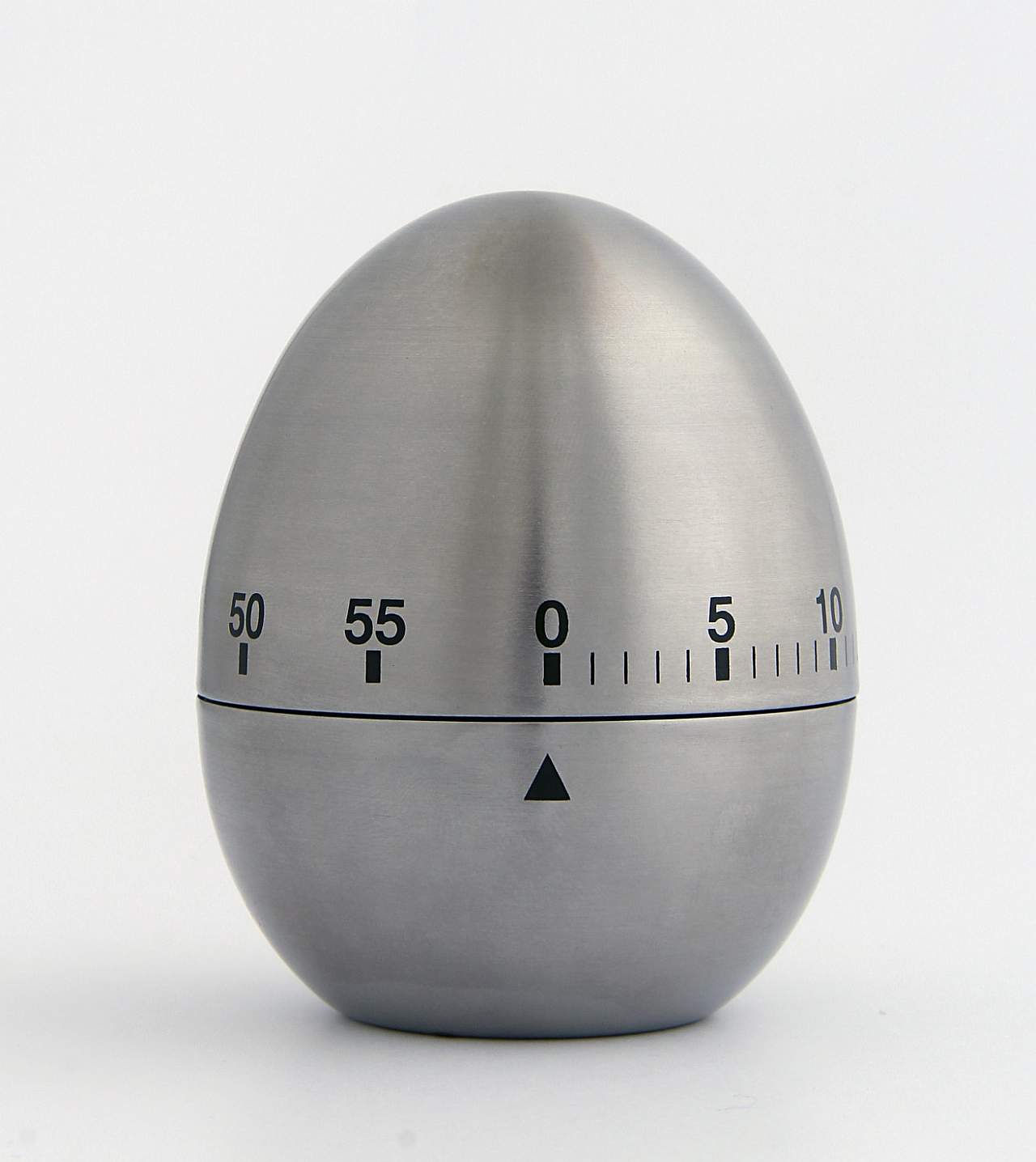
Planning the Structure
Before each session, list the scales, studies, and pieces you will work on. Then allocate how much time you’ll spend on each, and if you need to, use a timer to roughly stick to the plan. There is no need to put pressure on yourself about all of this, the aim is to create a container that your practice can rest on. Make it support rather than pressurize you. Plan clearly what you want to achieve in each session.
If you would like a printable copy of a practice plan to keep track of your practice habits, enjoy a free download here:

Fillable Practice Plan [PDF]
What is a Good Practice Routine?
A good practice routine is organized, to the point, and focused on the issues that need resolving. The exact length of a practice session, as well as the exercises and pieces, should always be adjusted to your level of playing. Such an approach will give you joy let you be yourself.
Practice Routine for an Absolute Beginner
Start with a session of around 15 minutes at the same time each day. Pick something to focus on, no more than three things. For example, you could choose to practice your bow hold. Find a few different exercises on this one thing and play around with them. Be creative and make it fun. When you feel done with this for the moment, pick another thing, say it is string crossing. Then, find a few different ways to work on this and spend some time just doing that.
Practice Routine for Beginner to Intermediate Level
You may practice for half of an hour or a whole hour, depending on how much time you have. I find it good practice to break up my practice sessions into three parts, easy, difficult, and easy. This way I get a chance to warm up, then work on something at the edge of my ability, and then come away feeling I can do this. Within this, you can include both pieces, etudes, other studies, and scales. It doesn’t have to be everything every day, but through the week it’s important to get a chance to work on all of those exercises.
Practice Routine for Advanced Players
You can be much more rigorous with your structure, and want to include more of the things that you find hard. Aim to work at that fine line where you can still do something, yet it’s taking you beyond where you’ve been before. If you have time for an hour-long practice, start with something easy to warm up, like a piece you’re very good at already or some easy scales. This could take a few minutes, just to get into the swing of it. Once you feel ready to start, you could spend a quarter to a third of your session on studies or e.g. 3-octave scales, then get into the piece(s) you’re learning, and spend around ten minutes at the end playing something you love and enjoy. This is so you can wind down, and finish feeling confident. Make sure the last thing is not the hardest thing you’re working on.
Practice Journal
To help you keep track of your progress, you can keep each day’s plan in a book, where you can put a tick next to the things you did manage to do. Some find this encouraging and it provides a sense of accomplishment.
I can sometimes be overly critical of myself and don’t appreciate just how much I have done in a day. Having a list of everything I did do can be good to look at to acknowledge my achievements.
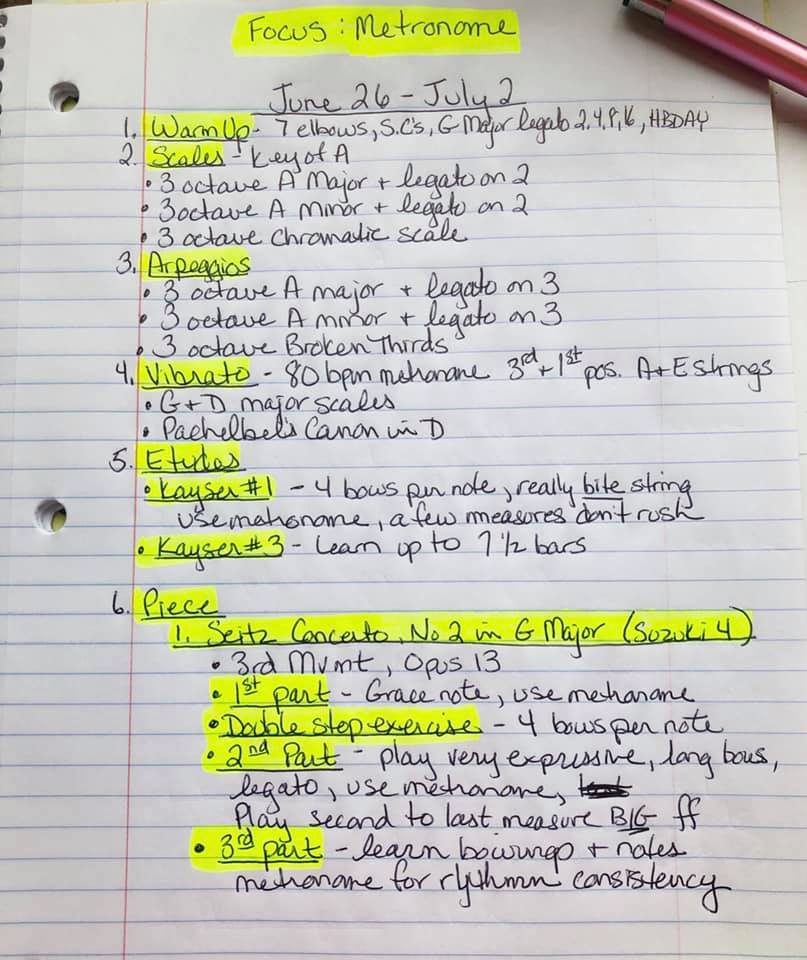
Violin Practice Resources
With the right practice resources, you will have fun while playing the violin, and also you will progress more quickly. There are various books dedicated to studying violin with pieces, scales, and other exercises. I published an overview of 18 books which you can find on this link. If you prefer a video tutorial, head on to my Video Lesson library, where you can find many popular songs to learn.
A lot of classical pieces are now in the public domain, so you can download them for free. Click here to check out my post with a choice of pieces for all levels, also for duets, and download them for free. If you feel ready for practicing a concerto, you may like my blog post “Top 10 Intermediate Violin Concertos”.
You may also want to learn very specific skills like bowing techniques, the third or fifth position.
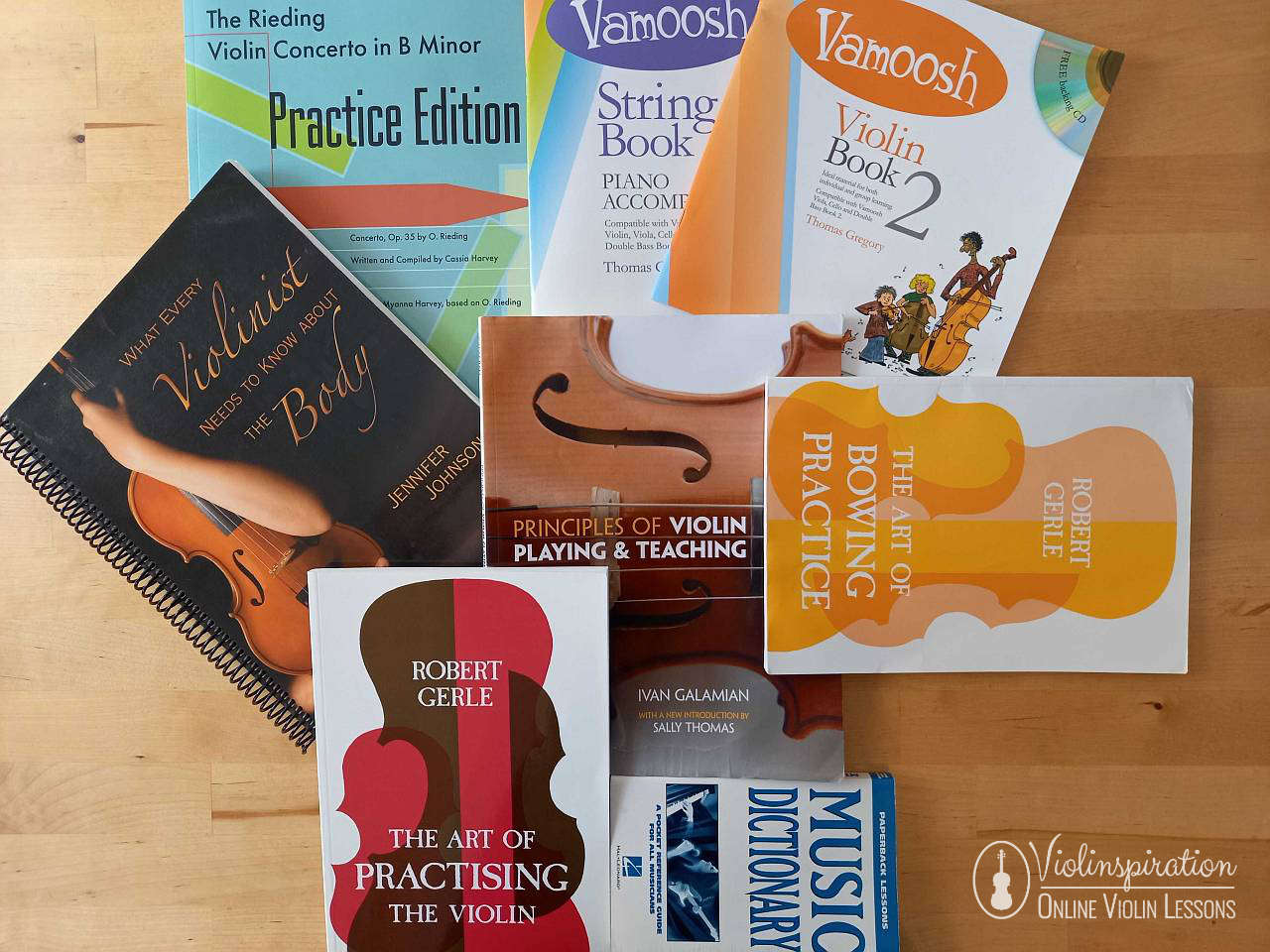
FAQ
How Much Should You Practice Violin?
Your violin practice session should be adjusted to your current level and the progress you would like to make. The length of a practice session may vary from 15 minutes, half of an hour to an hour, or even more.
The exact answer depends also on:
- How much time do you have after work and other commitments
- How important this is to you
- What practice time you are used to.
Around 15 Minutes
If you’re a complete beginner you need to give your body a chance to get accustomed to all these new movements. Also, the skin on your fingers will at first get hard and calloused, so don’t overdo it. You don’t need to make them bleed. This amount of time will not lead to fast progress.
If you are extremely busy and have just 5 minutes for practice a day, it’s also fine! In the video below I explain how to structure such a short practice session:
30 – 40 Minutes
Once your body has become comfortable and your fingers are no longer calloused, you can increase your practice time gradually, and have a longer session. The slightly longer time will help you make a little more progress, and this will be sufficient for a beginner to intermediate-level player.
1 Hour +
One hour will give you enough time to make good progress, as long as your violin practice is deliberate, effective, and not simply a mindless repetition of things.
If you’re an advanced player and want to make real progress, you can do 1.5 to 2 or more hours a day. However, several famous violinists such as Perlman or Heifetz were against a very long practice time. More than 3 hours a day is probably not necessary. Remember, the effectiveness of your practice is not simply the number of hours.
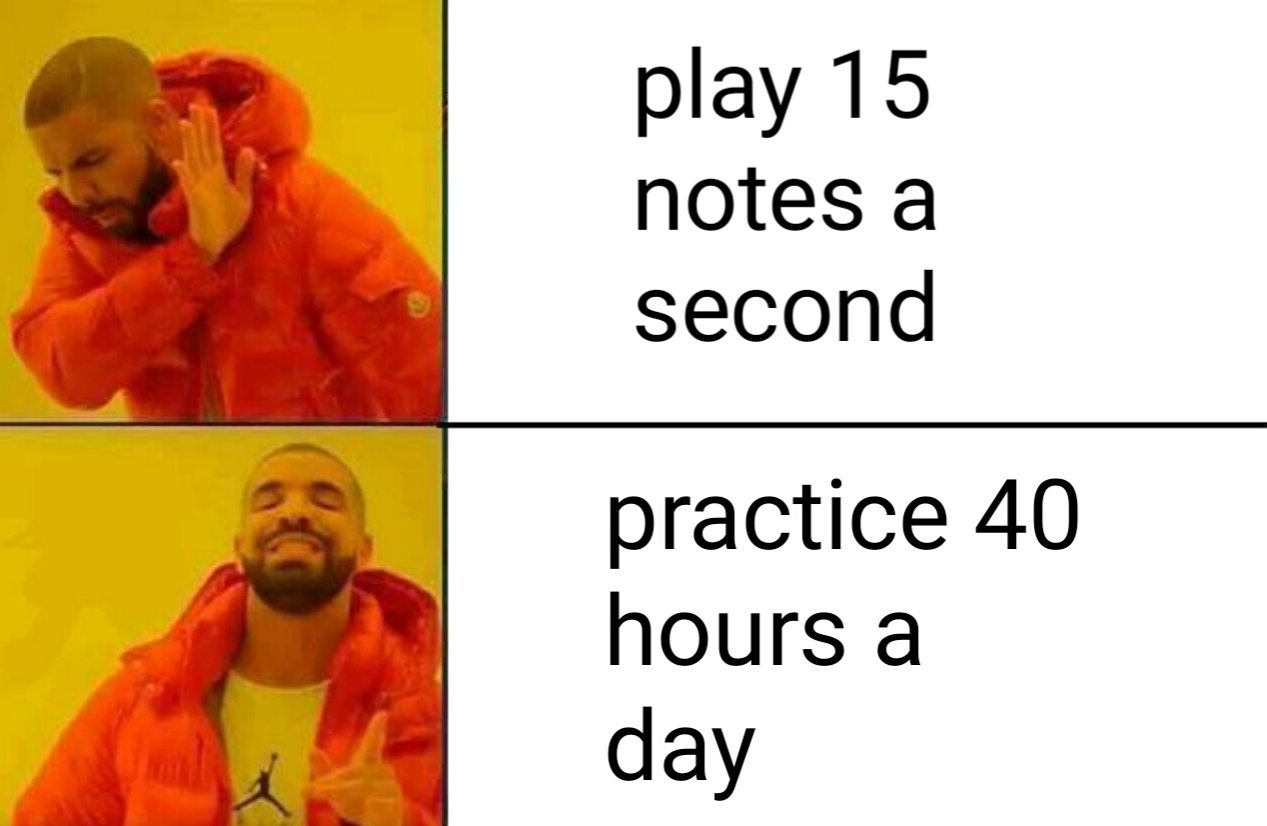
How Do Beginners Practice Violin?
As a beginner, it is important to develop good habits: proper posture, bow hold, the shape of the left hand. You want to get used to how the arms move and feel, and how your whole body holds itself. Playing with exercises focusing on each of these separately will be very beneficial.
For a good beginner routine I suggest the following:
- Tune your violin
- Warm-up
- Play a few scales
- Play through your main piece
- Find the difficult sections and mark them for future reference
- Work on one hard section with a clear intent on what you are aiming to improve
- Play through the piece again
- Play something easy
If you don’t know what to focus on, you can always pick one of the items listed above, such as posture, or simply play the same passage with more ease.
If you would like to follow a step-by-step practice plan adjusted to your level, I invite you to become a member of Julia’s Violin Academy.
When Should I Practice Violin?
In an ideal situation, you would have your practice session in the morning, as both the body and mind are most receptive to learning at that time. Whether that’s possible or not, playing violin at around the same time every day makes it easier to get into a routine.
How Can I Practice Violin Everyday?
You can practice violin every day by planning it in advance. With time, it will become your habit. Plan the time of your practice session, choose what you are going to practice and for how long, also decrease as much as possible things that may distract you.
The body likes routine and doesn’t like change. So at first it may take a little effort to create the habit. I find it useful whenever I am about to do something, not to just jump into it but say to myself ‘I’m going to do this in ten minutes. This gives my system time to get used to the idea that I am going to do this. Usually, by the end of ten minutes, I can feel myself gearing up to do the thing I said I was going to do. After a week or two of consciously doing even a short practice around the same time every day, it will become one of those things you just do. Like brushing your teeth.
If your other commitments don’t allow you to play at the same time, it’s not the end of the world, do it when you can.
How Can I Practice Violin Without Disturbing Others?
For many of us disturbing others or being heard can be discouraging, so it’s vital that it gets addressed.
1. Find a Good Place
This could be in a room furthest from everyone else, or in a separate building if that’s possible.
2. Find a Good Time
If you live together with other people, or your neighbors can hear you when you play, there are still a few things you can do. Talk to them and find times when it would be least bothersome for them and try to fit your routine around this.
3. Soundproof
If this is feasible, consider soundproofing a room. Apart from professional soundproofing with e.g. foam panels, you can lower sound levels by using heavy curtains, or bookcases as barriers. Draftproofing cushions under the door can also help.
4. Use Practice Mute
Practice mutes are large and go over the whole of the bridge. They are not the small round rubber ones used while performing or playing in an orchestra. They come in rubber and metal versions, and the metal one is much more effective at reducing the volume.
These reduce the sound considerably, but not completely. They also muffle your violin, so don’t use them all the time.
5. Choose Electric or a Silent Violin
Electric and silent violins are much quieter, though not completely silent either. The silent violin has the added benefit that you can hear yourself through headphones.
How to Practice Violin Without a Violin?
At times when you’re traveling on a train, or are away from your violin, it is possible to practice in your imagination. Close your eyes and feel yourself playing. The more real you can make this feel, the more it will actually create neuro-circuitry the same way an actual practice would. It does work.
There are other things you can do, like hearing the music in your mind and thinking about what voice you want to create. This way you can explore the musicality of the piece. I also talk about ways of practicing without a violin in the following video:
Conclusion
As you can see there are many things that make for good violin practice. It is therefore good to start with a few habits and add the others later. Take time to build things up. Start with the following:
- Create a structure for your practice
- Be regular
- Plan each session
- Keep track of your work and progress
- Start in small doses and increase gradually
- Be deliberate.
Now, download the practice plan, fill it out, and start practicing the violin right away!

Fillable Practice Plan [PDF]
